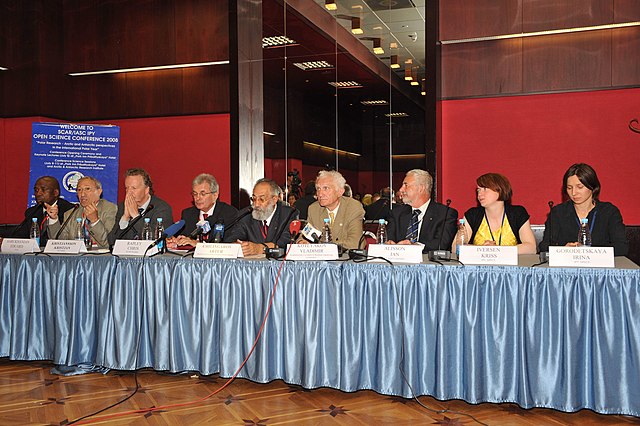International Geophysical Year
The International Geophysical Year, also referred to as the third International Polar Year, was an international scientific project that lasted from 1 July 1957 to 31 December 1958. It marked the end of a long period during the Cold War when scientific interchange between East and West had been seriously interrupted. Sixty-seven countries participated in IGY projects, although one notable exception was the mainland People's Republic of China, which was protesting against the participation of the Republic of China (Taiwan). East and West agreed to nominate the Belgian Marcel Nicolet as secretary general of the associated international organization.
A replica of Sputnik 1, which was launched into orbit on October 4, 1957.
A commemorative stamp issued by Japan in 1957 to mark the IGY. The illustration depicts the Japanese Research Ship Sōya and a penguin.
The launch of the satellite Explorer 1 on February 1, 1958.
The International Polar Years (IPY) are collaborative, international efforts with intensive research focus on the polar regions. Karl Weyprecht, an Austro-Hungarian naval officer, motivated the endeavor in 1875, but died before it first occurred in 1882–1883. Fifty years later (1932–1933) a second IPY took place. The International Geophysical Year was inspired by the IPY and was organized 75 years after the first IPY (1957–58). The fourth, and most recent, IPY covered two full annual cycles from March 2007 to March 2009.
Polar Station in Sodankylä (1894)
Soviet postage stamp commemorating the 1932–33 Polar Year
Press conference IPY 2008
Joint Committee at IPY Oslo 2010







